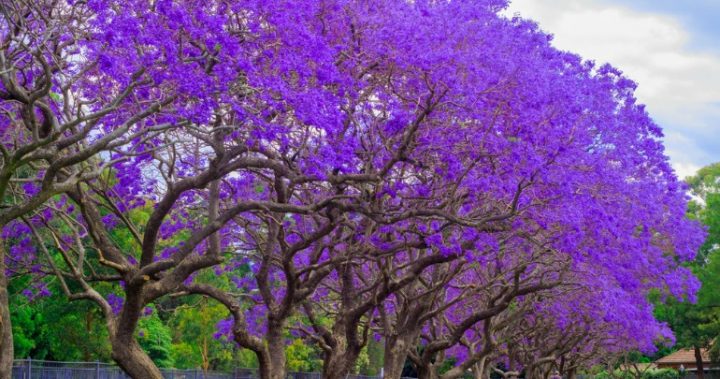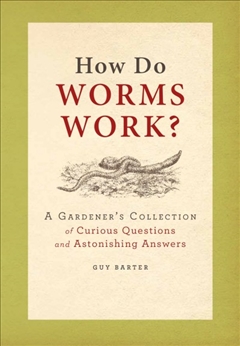Ever wondered why there are no blue roses or how worms breathe?

A title that is as humorous as you may (or may not) make it provides a guide to the relatively light-hearted manner in which Guy Barter has written his book, How Do Worms Work? The subtitle, A Gardener’s Collection of Curious Questions and Astonishing Answers, pretty much tells the reader what it’s all about, even before opening the cover and starting to read.
The book has its origins in England but has a pertinence to Australia and New Zealand because, as a guide to better understanding of what’s happening in and on and under your garden, it provides good, universal information. As Guy Barter asks, do you really need to know how a worm works, and will it make you a better gardener? He answers his own question with a ‘yes’ and goes on to provide a whole lot of other information that should help the reader understand why.
Oh, by the way, the author works with the Royal Horticultural Society, so he is certainly no slouch!
The book is split into five sections:
Seeds and Plants
Flowers and Fruit
Below the Ground
Weather, Climate and Seasons
In the Garden
There are 130 questions raised through those sections with appropriate answers provided. While the answers might not “…have an immediate, obvious application to practical gardening, you’ll find they build your gardening knowledge without you even noticing.”

I loved the chance to review this book. It took me back to school, returning me to botany and biology classes from 65 years ago, reminding me of many things that had slipped from mind in the ensuing time. For example, in Juliet’s words, what’s in a name? Who remembers the lessons on what constitutes a berry, and that a strawberry actually isn’t…? “Technically, a berry is the product of a single flower, in which the outer wall of the plant’s female organ – the ovary – develops into a pulpy, edible layer. This means that avocados and tomatoes are true berries while raspberries and strawberries are not.” Mind you, the one anomaly I could find in an otherwise excellent publication immediately followed, with Guy Barter saying that every segment of a raspberry is, in fact, “…a berry in its own right, containing an individual seed.” It is, indeed.
Why is there no true blue rose? Do plants in a humid atmosphere require less watering? Do ladybirds eat pollen? Is the CO2 we emit when speaking to plants beneficial to them? How are larger seeds spread on the wind? At what speed can a slug move? How do desert plants stay alive? Can some plants live without soil? The author answers all of these questions and many more in a book that is a light but entertaining read.
I suppose I ought to return to the title. It reminds me of the hardy old schoolyard perennial: A worm sticks its head above ground and says to another worm, “Hello, handsome.” The second worm replies, “Don’t be silly, I’m your other end!” As our master at the time used to say (and I guess it was pretty universal), a worm is a tube with a mouth at one end and an anus at the other, with very little in between. He’d then go on to explain, after the class settled back down, there is a lot more to a worm than that. But I’ll leave you to read about it and recall it all as you browse this beautifully presented little tome. Recommended.
How do Worms Work, by Guy Barter, (published by Hachette Australia) is available from Dymocks. Click here for details
Hachette Australia is a proud sponsor of Starts at 60 – the opinions expressed in this review, however, are those of the writer.








 Proudly Australian owned and operated
Proudly Australian owned and operated